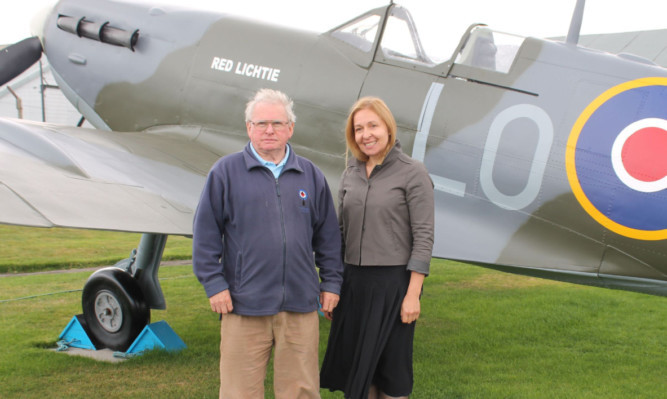Montrose Air Station hopes a Dundee woman who looked after Russian airmen during the Second World War can play a key role in its upcoming exhibition.
First they have the task of trying to find out what became of the woman, or tracing her relatives, and so have turned to The Courier’s readers for help.
The heritage centre is staging an event from May 15-17 as part of the Festival of Museums a national event sponsored by Museums Galleries Scotland and Visit Scotland.
A highlight of the event will be the opening of an exhibition entitled The Russians in Scotland.
Curator Dr Dan Paton said: “We are featuring this little-known episode in the war when Russian pilots came to Scotland to train to fly a British aircraft that was supplied to Russia. It was hush-hush at the time.
“They trained at Errol and Tealing, so they were close to Dundee. The foreign minister (Vyacheslav) Molotov also visited Britain on two occasions and his aircraft landed at Tealing.”
Dr Paton was told about the Dundee woman who was in the Women’s Auxiliary Air Force (WAAF) and looked after the Russian pilots while they were stationed at Errol in 1943-44.
He was also aware The Courier recounted her story 30 years ago in an article under the headline ‘What were the Russians really training for at Errol?’
The woman was Mrs Maria Boden. She was a sergeant in the WAAF and was placed in charge of catering arrangements for the Russian airmen at RAF Errol.
Dr Paton acknowledged that the passage of time may mean it is unlikely, but not impossible, that Mrs Boden herself could respond to their appeal.
He said: “I would like to feature her in the exhibition and I would like to get in touch with any surviving family members.”
He hopes the request from the air station might reach her relatives through The Courier and they might consider being guests at the exhibition and possibly meet Russian visitors who will attend the exhibition.
A driving force behind the Russian exhibition is Anna Belorusova, who featured in this newspaper two years ago as she sought to shed light on her grandfather’s time at Errol.
Anna has been in near-constant contact with Dr Paton, calling and emailing from Moscow with information for the exhibition.
Anna had been a regular visitor to Perthshire when she discovered that her grandfather, Peter Kolesnikov, had been based at Errol for a year of training during the war with Squadron 305, as part of an elite band of Russian pilots.
English course books, British maps and a menu adorned with a thistle provided clues to later generations that Mr Kolesnikov had visited the UK.
But the circumstances were unknown until Anna found details of 305 Squadron on the National Archive at Kew.
Journals revealed that Senior Lieutenant Kolesnikov arrived for training at Errol Air Station on April 6 1943 having completed a course on Hercules XI at the Bristol Aeroplane Company.
He left Errol almost a year later on March 24 1944.
His experiences and that of his fellow airmen was the focus of a previous exhibition at Montrose.
Anyone with information regards Mrs Boden or her family can contact drhind@thecourier.co.uk or phone 01382 575891.
